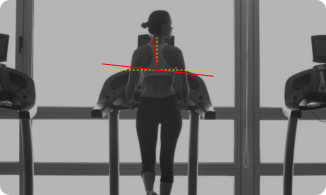Spinal Decompression Therapy
This is a non-surgical treatment for back pain that involves stretching the spine to relieve pressure on the discs and nerves
Active Learning Center to keep you up to date with Physio Active offerings.
Spinal Decompression Therapy

Introduction
If you’re dealing with chronic back pain, it can impact your work, social life and overall quality of life. There are treatments however to help alleviate this pain, one of which is Spinal Decompression Therapy, a non-surgical treatment, that involves stretching the spine to relieve pressure on the discs and nerves.
What is Spinal Decompression Therapy?
Spinal decompression therapy is a non-surgical treatment for back pain that involves stretching the spine to relieve pressure on the discs and nerves. The treatment is designed to create negative pressure in the spine, which can help to reposition bulging or herniated discs, reduce inflammation, and promote healing in the affected area.
Spinal decompression therapy can be performed using a variety of techniques, including motorized traction, manual manipulation, or a combination of the two. The treatment is typically administered in a clinical setting, and most patients will require multiple sessions to achieve the desired results.
At Physio Active, we use focused shockwave therapy, which is a more targeted form of treatment. This approach allows us to deliver the shockwaves precisely to the affected area, which can lead to better results and faster healing times.
How does Spinal Decompression Therapy work?
Spinal decompression therapy works by creating negative pressure within the spine, which can help to reposition bulging or herniated discs, reduce inflammation, and promote healing in the affected area. The negative pressure created during the treatment can also help to increase blood flow to the affected area, which can aid in the healing process.
During a spinal decompression therapy session, the patient is positioned on a traction table, which uses motorized or manual manipulation to stretch the spine. The therapist will adjust the table to target the affected area of the spine, and the patient will be secured with straps to prevent movement during the treatment.
The treatment is typically administered in 20-30-minute sessions, and patients may require multiple sessions to achieve the desired results. The number of sessions required will depend on the severity of the patient’s condition and the specific treatment plan recommended by the therapist.
Types of Spinal Decompression Therapy
There are two main types of spinal decompression therapy: surgical and non-surgical. Surgical spinal decompression is a more invasive procedure that involves removing a portion of the spinal bone to relieve pressure on the nerves.
Non-surgical spinal decompression, on the other hand, is a less invasive treatment that uses traction to stretch the spine and relieve pressure on the discs and nerves. Non-surgical spinal decompression can be performed using motorized or manual manipulation, or a combination of the two. Motorized traction therapy involves the use of a computer-controlled table that applies a precise amount of force to the spine. Manual manipulation, on the other hand, involves the therapist using their hands to manipulate the spine.
What to expect during a Spinal Decompression Therapy session
During a spinal decompression therapy session, the patient will be positioned on a traction table and secured with straps to prevent movement during the treatment. The therapist will adjust the table to target the affected spine area, and the treatment will begin.
The patient will typically feel a gentle stretching sensation as the table begins to pull on the spine. The therapist will gradually increase the force applied to the spine during the treatment, and as a result, the patient may feel some mild discomfort. However, the treatment should not be painful, and the therapist will adjust the force as necessary to ensure the patient’s comfort.
The treatment will typically last 20-30 minutes, and the patient may require multiple sessions to achieve the desired results. After the treatment, the patient may feel some mild soreness or stiffness, but this should subside within a few hours. The therapist may also recommend some stretches or exercises to help promote healing and reduce the risk of further injury.






